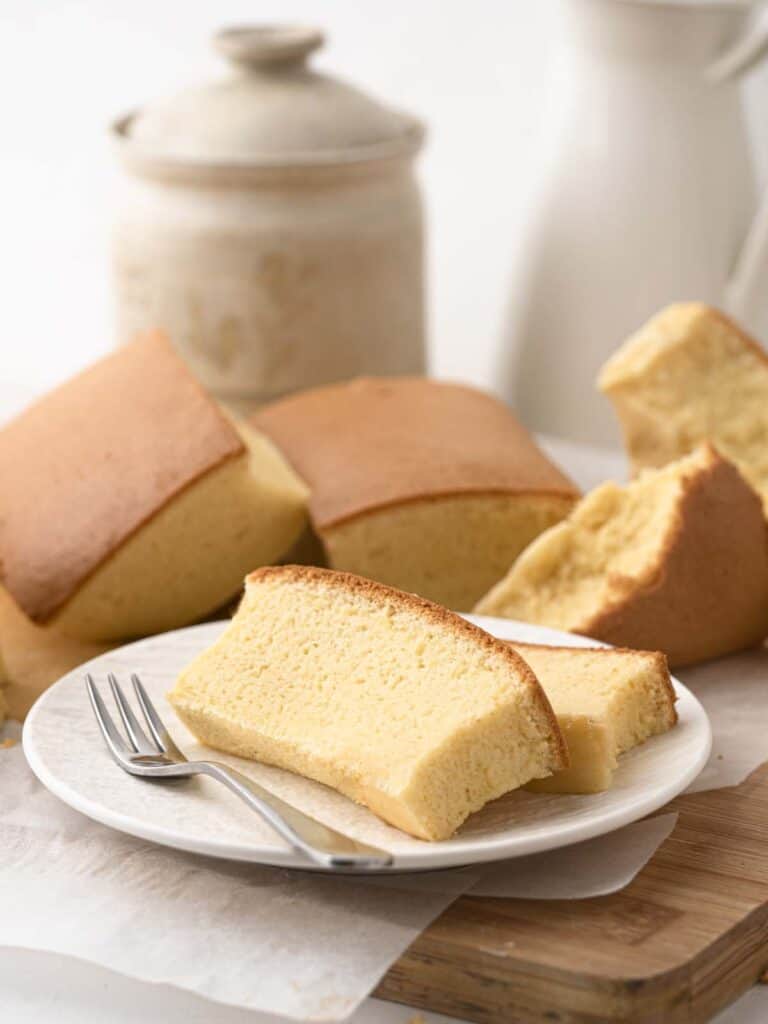Instead of being baked on a large scale like the Taiwanese adaptation, Japanese castella is baked in a wooden square or rectangular mould and enjoyed the day after it is baked as it brings out a moister texture.
While both cakes may have the same name they have their own unique charms. I personally love the Taiwanese castella cake because of its fluffy texture, but give this recipe a go and see what you think!

HOW TO ACHIEVE A CRACK FREE CAKE
Sponge cakes are the kind of cake that seems relatively simple, but there are so many small areas where things can go wrong. Whether that be a sunken cake or a cracked top follow these steps for the perfect castella!
HEAT THE MILK AND BUTTER UNTIL JUST MELTED
Heating the milk and butter is one of the tricks to achieving a cotton soft sponge cake. This technique is called the ‘cooked dough’ method, and essentially breaks down the proteins in the flour so that less gluten is formed, creating a soft sponge.
However, when heating the milk and butter keep a close eye on it so it doesn’t overheat. If the milk and butter is too hot it can overcook the dough, causing it to form a sticky paste. The butter should have just melted and the milk should be just steaming.
USE CHILLED EGGS
Chilled eggs whip up to create a firmer, more stable meringue. The meringue forms the base of this cake, helping it rise while giving it it’s fluffy texture, so it is essential to have a strong foundation. You can also add a pinch of cream of tartar to your egg whites once foamy to help strengthen the meringue.
Continue Reading in next page

